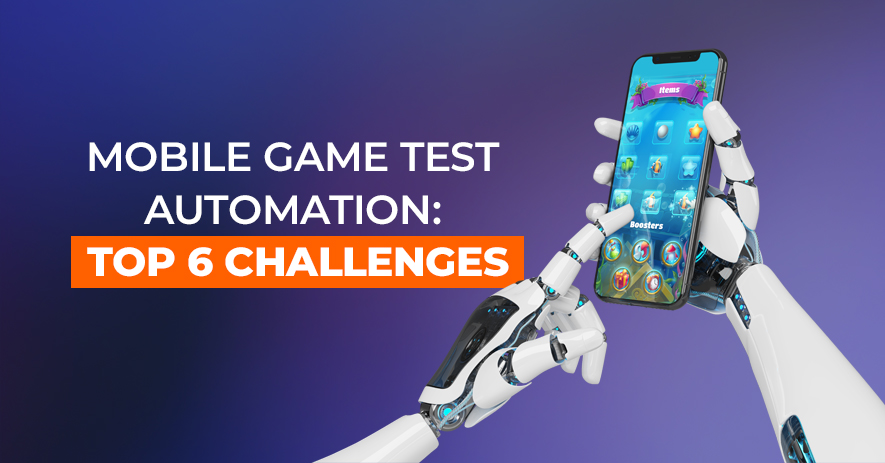
Automated testing of mobile games can be extremely useful to save time and money and increase efficiency during QA. But it has a number of unique specifics and challenges a QA engineer should be aware of to make the testing process worthwhile.
Here is our list of top 6 challenges in mobile game test automation and some of the ways to deal with them.
Challenge 1: Access to mobile game elements
The main difficulty of mobile game automated testing is that games run on the OpenGL and ActiveX graphics containers, which provide direct screen access, bypassing the operating system level services. Because of this, it is difficult to access elements of the game inside the container through regular test automation tools.
Currently, the most widespread way to access mobile game elements is to recognize the location of the element on the screen using image recognition. Image libraries such as the OpenCV library along with test automation tools and plugins are used for image recognition.
Challenge 2: Image references
Another challenge of test automation for mobile games related to image recognition is to find good image references and maintain a references database. The problem is that different tests on different devices require reference images with different characteristics (size of the image, how it is cropped, etc.).
Also, when anything in the mobile game’s interface changes, the image references should be adjusted. As a result, producing and maintaining a database of image references takes a lot of time and effort.
Challenge 3: Long time to process images
One more difficulty is that the image recognition library needs time to process images, which may be too long for dynamic test cases.
Challenge 4: Test scripts and game synchronization
The mobile game interface is faster than the interface of a regular mobile app, so the synchronization between the test scripts and the game may be challenging.
Challenge 5: Test results interpretation
It is more difficult to interpret the results of the automated tests for mobile games than for regular mobile apps because games have the randomization aspects and physics that regular apps don’t have.
Challenge 6: The fun factor
While testing of any app should not be 100% automated, this is especially true for games testing because evaluating the fun factor of the game cannot be automated.
Conclusion
Mobile game test automation can be challenging. But it can also bring great results when done right.
We hope this article was helpful in shedding some light on the specifics and possible difficulties of mobile games automated testing. We wish you a most effective game QA process. And if you are interested in assistance with testing your game, our team of experienced game QA engineers is always ready to help you.
